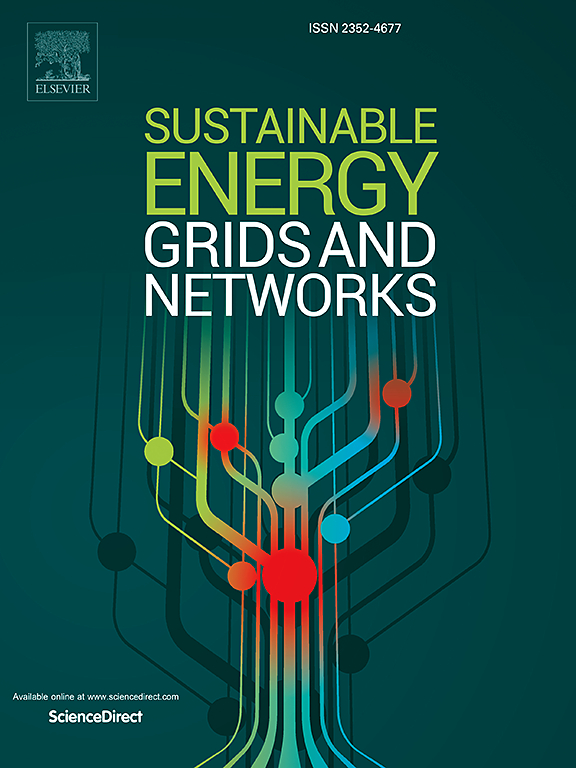An efficient computational method for network analysis using clustering of electric vehicle charging pattern in parking
IF 5.6
2区 工程技术
Q2 ENERGY & FUELS
引用次数: 0
Abstract
Due to the increasing penetration of electric vehicles (EVs) in the transportation fleet, long-term network stability analyses have faced serious challenges due to the large amount of data and computational complexity. This issue is due to the need to examine many daily scenarios to understand the long-term impacts of vehicle charging on the network. This process is considered very time-consuming and impractical. In response to this need, this paper introduces a method for clustering long-term scenarios in EV charging planning, which aims to reduce the computational burden in network stability studies. The proposed approach includes the (main) steps of collecting EV data from parking lots (PLs), extracting probability density functions for key parameters such as entry/exit times and charging rates, and then generating synthetic data for many scenarios. In the next step, the EV data tables are converted into feature vectors and clustered using the K-means and Fuzzy C-means clustering algorithms. One of the key innovations of this research is the provision of a robust validation framework obtained by comparing the results of two clustering paths: the first path based on EV data tables (EVDT) and the second path based on daily load curves (DLC) generated by the charging scheduling algorithm. Simulation results performed on real data show that the proposed method can correctly identify four distinct behavioral patterns. This means that the best number of clusters is determined to be four. Furthermore, the results obtained from the two clustering paths, with more than 90 % similarity, confirm the reliability and efficiency of the method in extracting representative scenarios. The findings of the paper indicate that this method could significantly reduce the computational volume associated with long-term network studies while maintaining the accuracy and comprehensiveness of the analysis.
基于聚类的电动汽车停车充电模式网络分析的高效计算方法
随着电动汽车在交通运输中的日益普及,由于数据量大、计算量大,长期网络稳定性分析面临严峻挑战。这个问题是由于需要检查许多日常场景,以了解车辆充电对网络的长期影响。这个过程被认为是非常耗时和不切实际的。针对这一需求,本文提出了一种电动汽车充电规划中长期场景聚类的方法,旨在减少网络稳定性研究中的计算负担。该方法的主要步骤包括从停车场收集电动汽车数据,提取进出次数和充电率等关键参数的概率密度函数,然后生成多种场景的综合数据。下一步,将EV数据表转换为特征向量,并使用K-means和模糊C-means聚类算法聚类。本研究的关键创新之一是通过比较两种聚类路径的结果,即基于电动汽车数据表(EVDT)的聚类路径和基于充电调度算法生成的日负荷曲线(DLC)的聚类路径,提供了一个鲁棒的验证框架。实际数据的仿真结果表明,该方法能够正确识别四种不同的行为模式。这意味着集群的最佳数量被确定为4个。两种聚类路径的相似度均在90% %以上,验证了该方法提取代表性场景的可靠性和有效性。本文的研究结果表明,该方法可以显著减少与长期网络研究相关的计算量,同时保持分析的准确性和全面性。
本文章由计算机程序翻译,如有差异,请以英文原文为准。
求助全文
约1分钟内获得全文
求助全文
来源期刊

Sustainable Energy Grids & Networks
Energy-Energy Engineering and Power Technology
CiteScore
7.90
自引率
13.00%
发文量
206
审稿时长
49 days
期刊介绍:
Sustainable Energy, Grids and Networks (SEGAN)is an international peer-reviewed publication for theoretical and applied research dealing with energy, information grids and power networks, including smart grids from super to micro grid scales. SEGAN welcomes papers describing fundamental advances in mathematical, statistical or computational methods with application to power and energy systems, as well as papers on applications, computation and modeling in the areas of electrical and energy systems with coupled information and communication technologies.
 求助内容:
求助内容: 应助结果提醒方式:
应助结果提醒方式:


